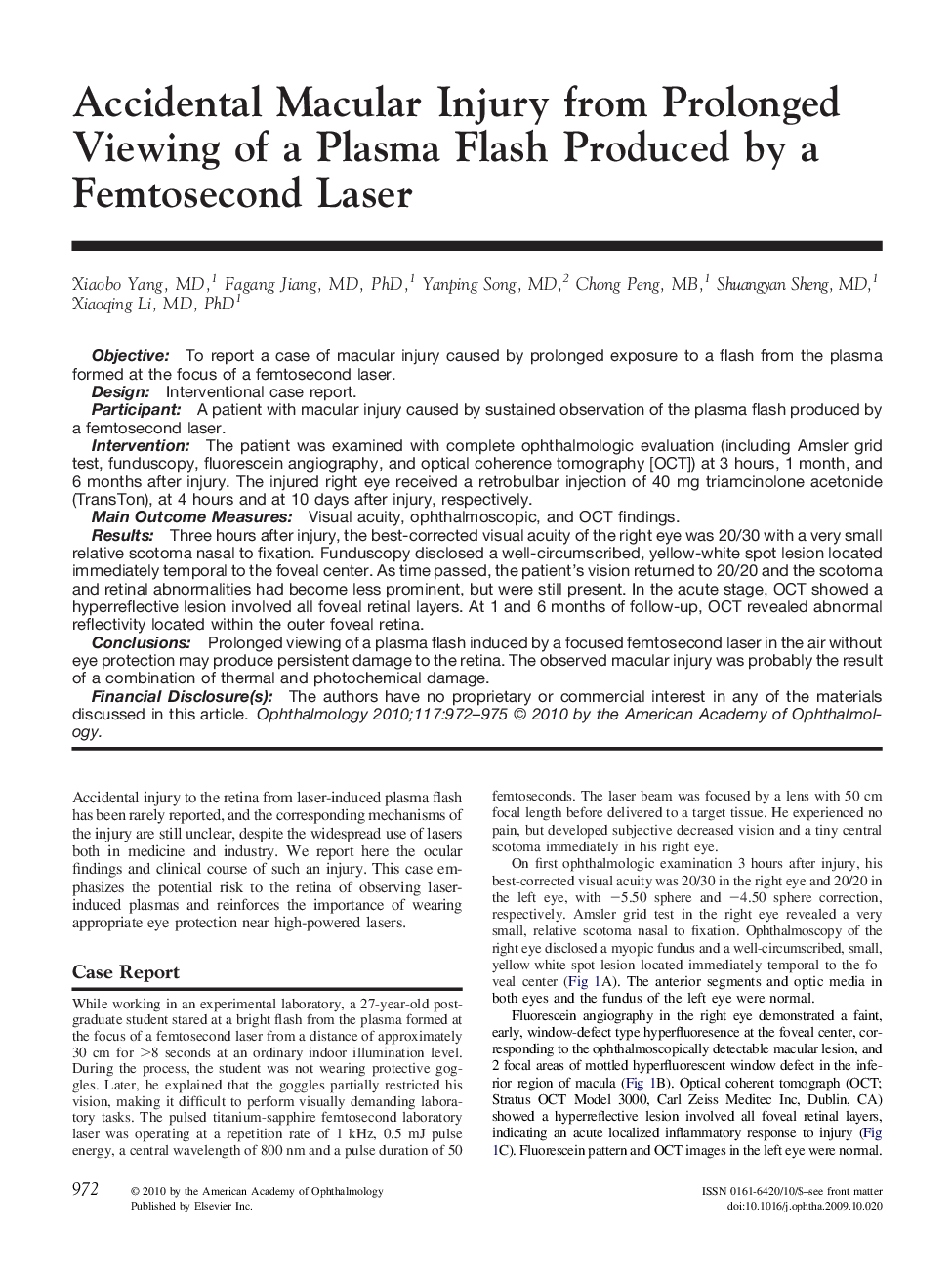| Article ID | Journal | Published Year | Pages | File Type |
|---|---|---|---|---|
| 4028503 | Ophthalmology | 2010 | 4 Pages |
ObjectiveTo report a case of macular injury caused by prolonged exposure to a flash from the plasma formed at the focus of a femtosecond laser.DesignInterventional case report.ParticipantA patient with macular injury caused by sustained observation of the plasma flash produced by a femtosecond laser.InterventionThe patient was examined with complete ophthalmologic evaluation (including Amsler grid test, funduscopy, fluorescein angiography, and optical coherence tomography [OCT]) at 3 hours, 1 month, and 6 months after injury. The injured right eye received a retrobulbar injection of 40 mg triamcinolone acetonide (TransTon), at 4 hours and at 10 days after injury, respectively.Main Outcome MeasuresVisual acuity, ophthalmoscopic, and OCT findings.ResultsThree hours after injury, the best-corrected visual acuity of the right eye was 20/30 with a very small relative scotoma nasal to fixation. Funduscopy disclosed a well-circumscribed, yellow-white spot lesion located immediately temporal to the foveal center. As time passed, the patient's vision returned to 20/20 and the scotoma and retinal abnormalities had become less prominent, but were still present. In the acute stage, OCT showed a hyperreflective lesion involved all foveal retinal layers. At 1 and 6 months of follow-up, OCT revealed abnormal reflectivity located within the outer foveal retina.ConclusionsProlonged viewing of a plasma flash induced by a focused femtosecond laser in the air without eye protection may produce persistent damage to the retina. The observed macular injury was probably the result of a combination of thermal and photochemical damage.Financial Disclosure(s)The authors have no proprietary or commercial interest in any of the materials discussed in this article.
